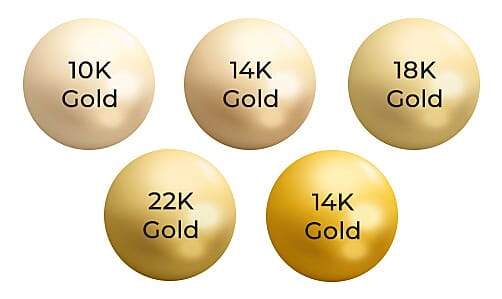What is a Gold Alloy?
Today, most gold jewelry mountings are forms of 'gold alloy.' An alloy is a mixed metal compound. A gold alloy contains one part of gold blended with one or more other elements. In most scenarios, gold alloys are blended with other metals like platinum, silver, or iron. Gold is perfect for creating alloys with other metals due to its flexibility and outstanding versatility. In making gold alloy, the gold purity decreases, and it results in hard and durable material.










